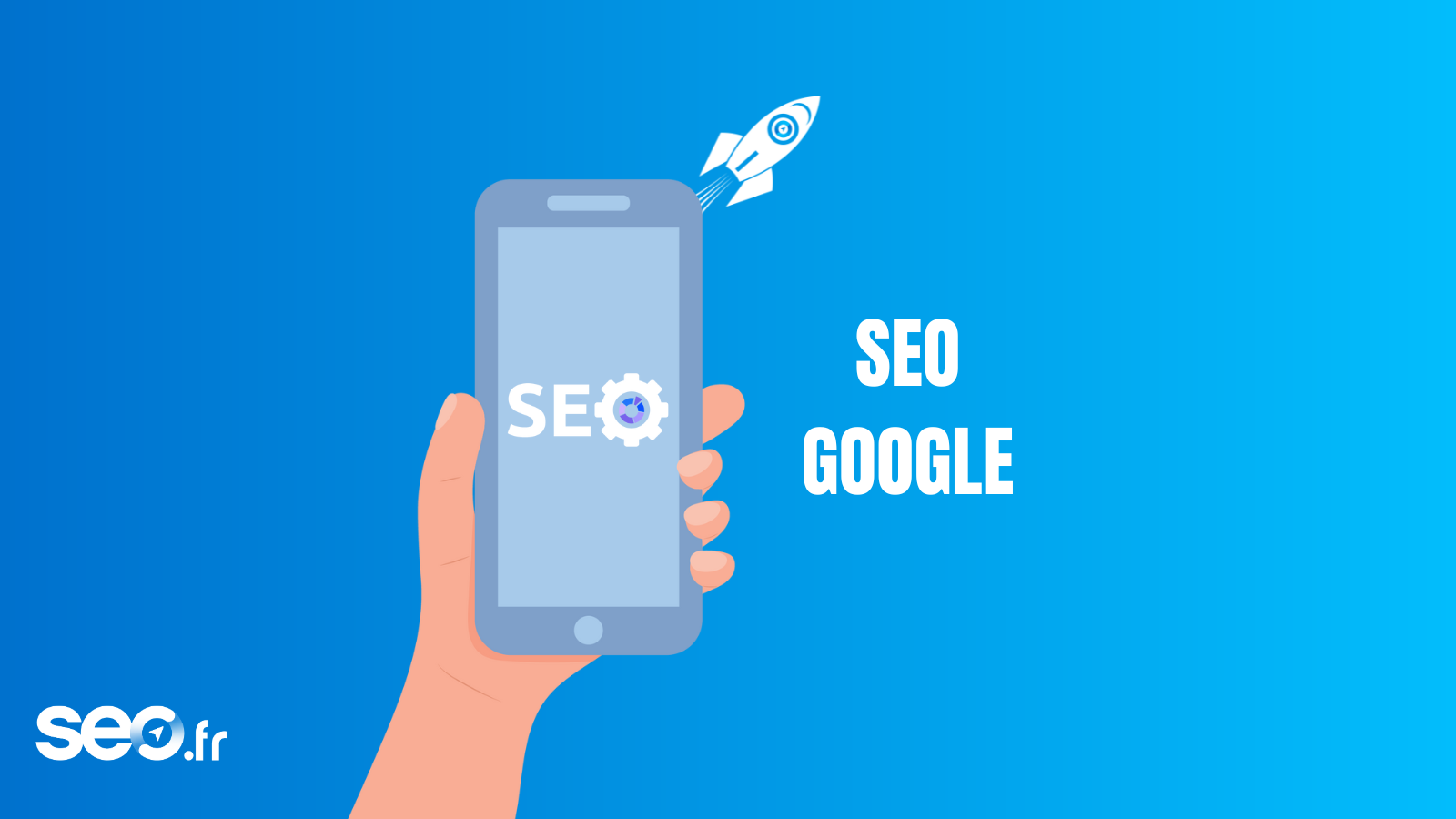Good referencing on Google
ideally requires the use of a number of techniques and tools, which we will highlight in this guide.
Summary
Natural referencing
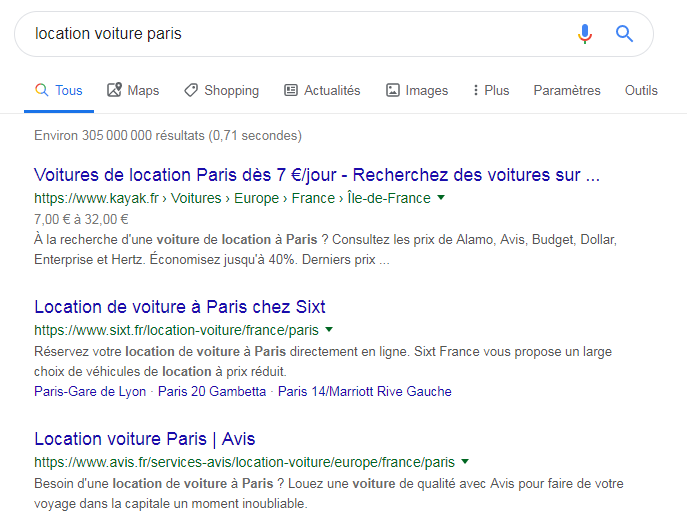
What is SEO?
Search Engine Optimisation (SEO) refers to all the techniques used to improve a website’s visibility in so-called organic or natural search results. These are responses to queries made by Internet users on search engines such as Bing and Google. They are generated automatically and almost instantaneously using the algorithms of these engines. Each response (or result) corresponds to a web page on a given website.
Positioning factors in search engine optimisation
For a page on your website to appear at the top of a search engine’s ranking for a given expression, it must meet a multitude of relevance criteria. It is characterised by a rich lexical field, in which keywords related to the page title appear. In addition, the site to which it belongs must facilitate the indexing of its content by the search engine robots, which scan the text, images and videos and summarise them in the form of concise results. In other words, no technical barrier should slow down or even prevent the work of these robots. Furthermore, search engines tend to favour the visibility of websites that are praised by other websites. In their eyes, ‘popular’ or well-known platforms are those that receive a large number of links (called backlinks) from other websites, ideally links from equally popular sites on a similar or related topic. SEO is the acronym for Search Engine Optimisation.
To sum up, there are 3 main areas to exploit:
- Content
- External links or backlinks
- Technique
Paid referencing
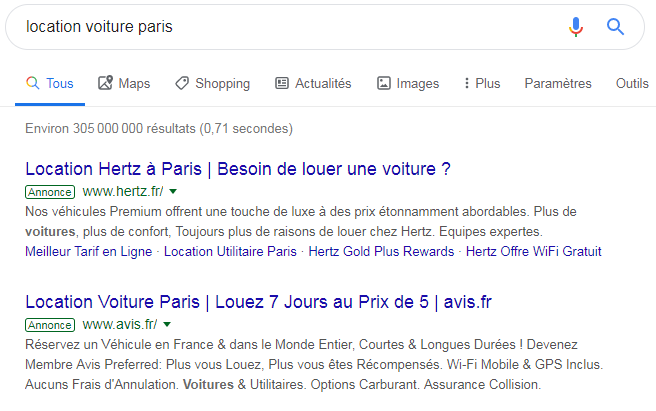
What is SEA?
Paid search is also known as SEA, an acronym for Search Engine Advertising. It refers to sponsored ads that are given greater prominence than natural search results. They are mainly found at the top of search engine pages, but can also appear laterally and at the bottom of each page. Professionals wishing to highlight pages on their site pay Google’s advertising network directly. This also applies to advertising banners displayed on partner sites outside the search engines.
Got an SEA question?
Géraldine can help
5 years’ expertise in SEA

How Google Adwords works
The price and visibility of an advertisement are based on a bidding system. This is a cost-per-click system, meaning that a company only pays if a web user clicks on the ad (the result of paid search) that leads to the page on its website. When do the ads appear? Take Google, for example, with its Adwords sponsored links. This is by far the most widely used tool among French advertisers. It is not based on a traditional bidding system: the position of ads depends not only on the price set for a keyword, but also on the level of quality determined by Google itself, based on the relevance of the ads and the content of the destination page. What’s more, the fixed bid (CPC Max) is not the actual amount paid by the sender of the ad; it is the maximum rate that an advertiser is prepared to pay. Google charges the advertiser one cent more than the bidder below them.
Google Ads, the ad creation tool
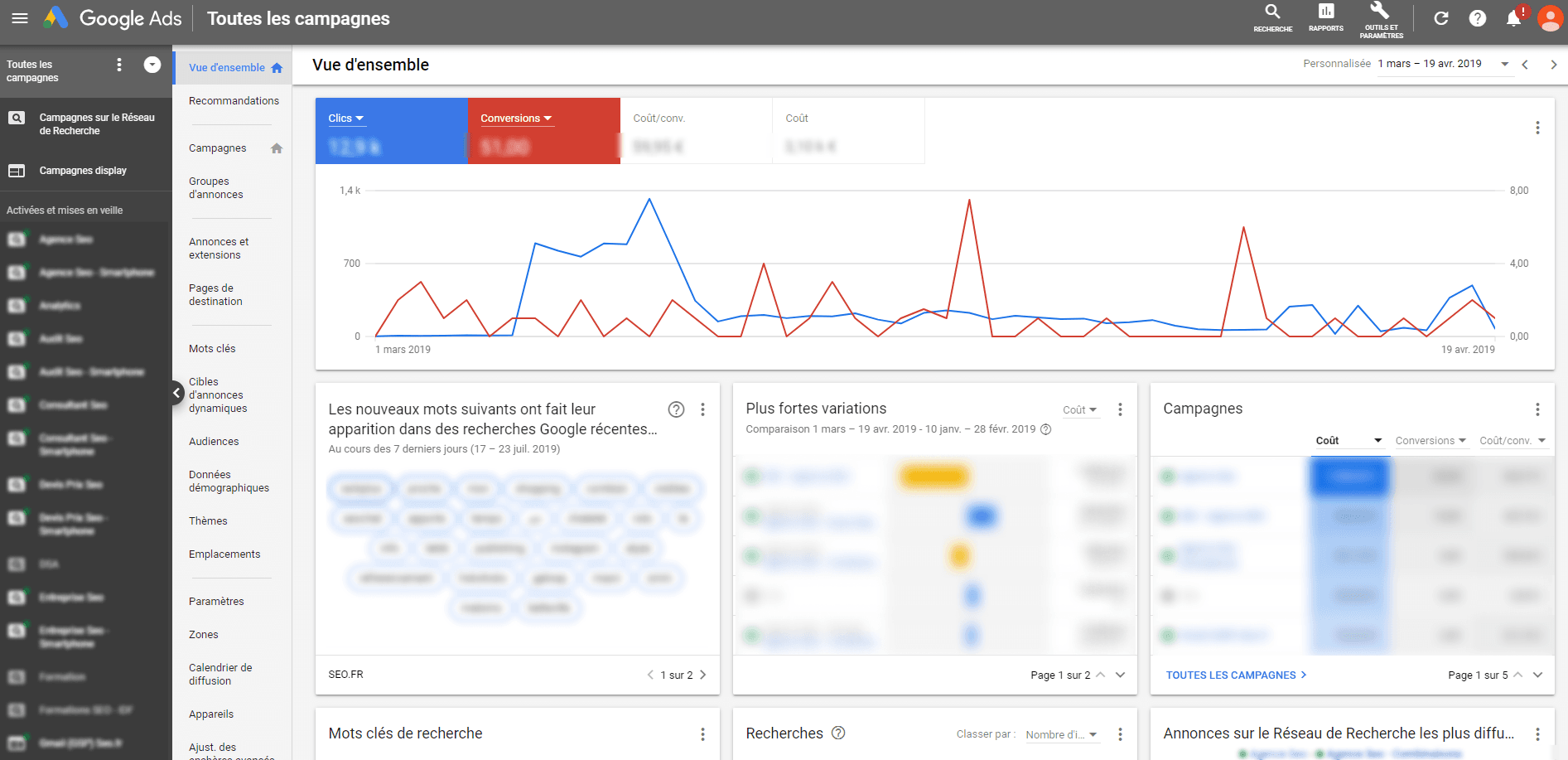
The principle of Google sponsored ads
Google Ads is the advertising programme of the dominant search engine. It gives professionals the opportunity to have their ads displayed in various places. Firstly, there are the sponsored ads that are highlighted in the search results, some of which have the advantage of being much more visible than the natural results, for which professionals are not paid by Google. Secondly, there are the small text ads, illustrated ads and videos presented to Internet users on Google’s network of partner sites.
The advantages of sponsored links
One of the advantages you can take advantage of is, of course, the incredible audience potential of search engines. Sponsored links in search results arouse the interest of Internet users because they are seen first. Sponsored link campaigns are also popular with brands, which only pay Google when users click on the links that direct them to the site – a cost-per-click (CPC) system. What’s even more interesting is that these ads are targeted: you choose the keywords on which you want to appear in the results, thus attracting consumers interested in your goods or services. Adwords are particularly attractive for professionals who are launching their online activity and don’t want to wait to see their platform enjoy advantageous visibility in the organic results.
To publicise your offers, you can also display banners on Youtube, Gmail or any other website your target audience might visit.
Local referencing
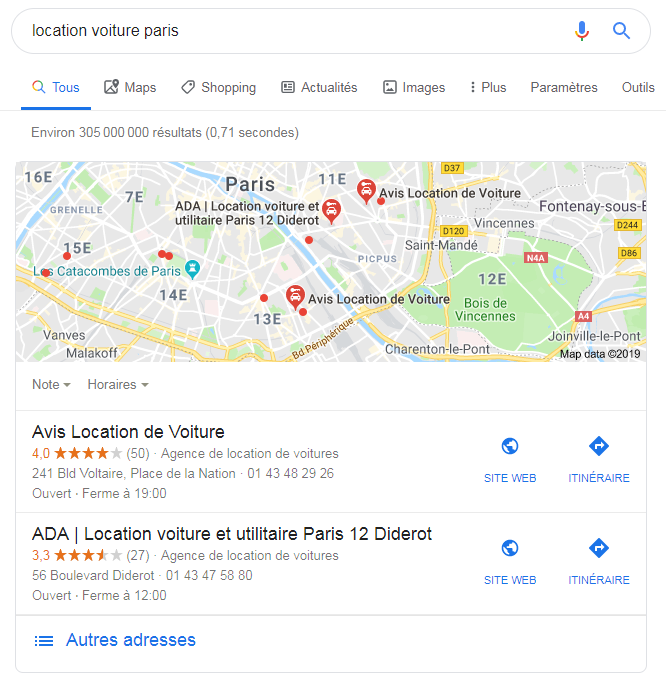
Google My Business tool
Geolocation queries have grown steadily in recent years, with Internet users no longer simply using search engines to obtain information, but increasingly to identify businesses that they can visit quickly. Google My Business is a tool that enables businesses that are open to the public to create a listing that will appear in the results based on users’ geolocation searches (hairdresser in the Marais district of Paris, DIY shop in the Lyon suburbs, plumber in 13001, etc.).
Informing Internet users about your local business
The aim is not just to alert Internet users to the existence of the business, but to provide them with a wide range of information. From the telephone number to the opening times and the products/services on offer, not forgetting the itinerary, which can be automatically calculated from home or the location. Among the data that can make all the difference to the competition are the reviews left by consumers.
Google My Business
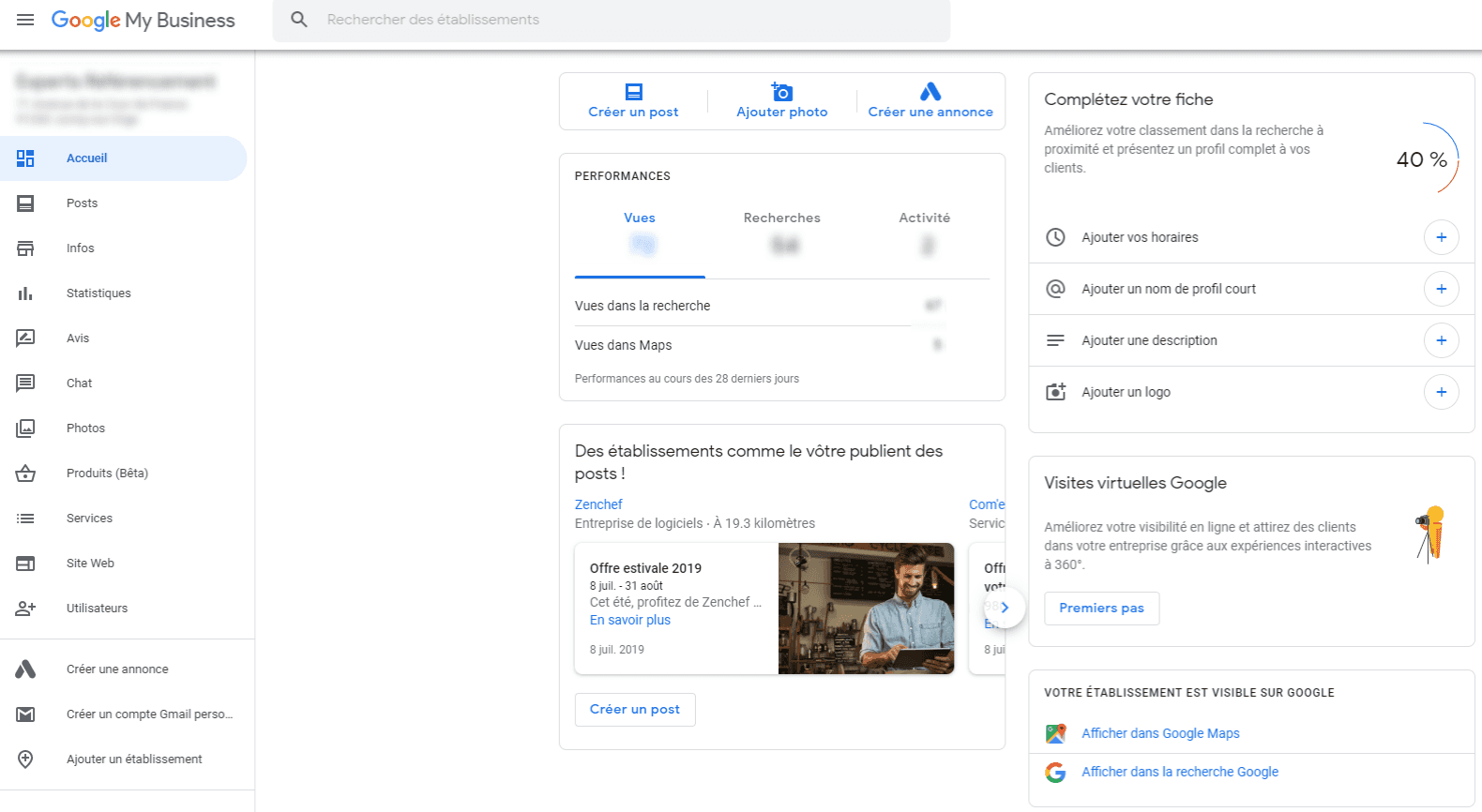
A tool accessible to all
Fans of Google Search Console and/or Google Analytics will be familiar with the Google My Business interface. In fact, this tool uses the same codes as the other services provided by the Mountain View company: a streamlined interface, hierarchical information, etc.
So you don’t have to be a web marketing whiz to optimise your listing and add content regularly. After all, that’s what it’s all about: a professional in any business sector has the opportunity to update the information about their establishment with just a few clicks to better meet the expectations of web users and try to attract more prospects to their business.
Google My Business features
There are a number of options available to those with a Google My Business listing. In particular, they can showcase a few products, like a showcase mini-site. There’s also the option of publishing photos, a particularly important way of showcasing your business and making it stand out from the crowd. From the tool’s back office, you can also create posts to highlight a promotion, promote a new product or announce an event. What’s more, by clicking on the statistics menu, you can access your site’s performance and see the results of your actions.
Other types of Google referencing
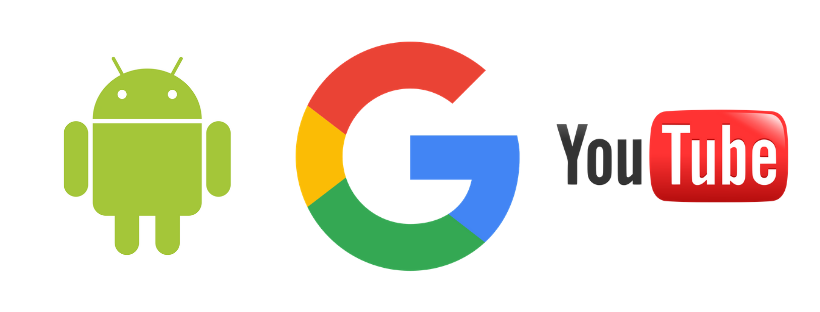
Google Shopping listing
There is another way for retailers to promote their products on the dominant search engine. This time we’re talking about Google Shopping listings, which were initially free but now have to be paid for. It shares a common feature with AdWords sponsored links, namely the cost-per-click system. There are a number of ways of optimizing campaigns on this tool. These include working very rigorously on product titles to increase click-through rates, and of course selecting striking visuals that are representative of the products on offer and encourage visitors to go to the relevant landing pages. It is also important to segment your adverts properly and, ideally, to join a paid reviews’ platform so that the stars give your seller profile credibility.
Google Image search engine optimization
The importance of images for visibility
Texts are the first elements to be focused on when you want to improve the positioning of your pages. However, they should not be the focus of attention, as the illustrations that accompany them also have a role to play in the visibility of a website. On the one hand, platforms that are already well referenced can take advantage of this additional audience leverage to establish their dominance in their field of activity. On the other hand, their competitors have an alternative way of attracting prospects to their respective sites, thanks to traffic from Google Image.
Image types and formats
While this applies to all the players on the web, some categories of site have a greater interest in positioning their drawings, computer-generated images, computer graphics or just photographs. These include tourism professionals, graphic designers’ portfolios and, more broadly, e-commerce shops. The name given to the file is important, as is the ALT tag, which is taken into account by search engine spiders. Other criteria for indexing and positioning images include choosing common formats (GIF, JPEG, etc.) and taking care with the lexical field surrounding the illustration.
Got an SEO question?
Julia can help
7 years of SEO expertise

Google News referencing
On a large number of queries, the dominant engine favors the positioning of the “freshest” content. Added to this is the news aggregation service offered by the Californian behemoth, Google News. As its name suggests, this tool references news items that are likely to correspond to the searches of Internet users. You don’t automatically appear in this service, which for some addresses is responsible for over 80% of their audience. You need to request that your site be included in Google News and comply with the technical guidelines laid down by the search engine. It goes without saying that articles must be carefully written and deal with topical issues. Pages containing little advertising, signed and dated articles, an editorial team comprising at least 2 or 3 members… there are many other eligibility criteria. For example, a merchant site that is essentially made up of static pages highlighting its products is not likely to feature on Google News / Google Actualities.
Youtube referencing
You’ve no doubt noticed the growth of YouTube over the last decade. Today, it is difficult to do without this platform if you want to tap into all the sources of audience on the web. In the area that includes Europe, the Middle East and Africa, Google’s video streaming service accounted for almost a third of traffic (30.39%) in 2018. Do you think you’ve mastered the SEO codes for web pages on Google Search and are thinking of applying them to YouTube? While there are similarities, the platform has its own rules when it comes to optimization. There are a few things you can do, and their impact depends of course on the quality of the content published on YouTube, but also on the competition in force: choice of catchy titles, exhaustive descriptions of videos, hierarchisation of content using playlists, etc.
Android search engine optimization
Mobile traffic has been outstripping desktop audiences for some time now. Many mobile users use applications for information, games, travel and work. So it would be wrong to overlook the potential of this lever. However, developing an application is not enough for it to be downloaded on a massive scale. The Google Play Store is the platform where users can get these tools. In the face of stiff competition, you need to adopt the rules of Android SEO if you want to make the most of your investment. To do this, the company in question must carefully choose the name of the application, which corresponds to the title tag for a website, describe it precisely, and not forget to illustrate it with striking screenshots. This is certainly not enough when you don’t have an internationally renowned brand, you need to manage to get good ratings, glowing reviews and links to the application, created by other websites and considered as reliable recommendations by Google.
Google’s SEO tools
Site analysis
Whether it’s a question of evaluating the results of a strategy or determining the barriers to indexing, it is difficult, if not impossible, to avoid using the main tools of the Californian search engine.
Google Search Console
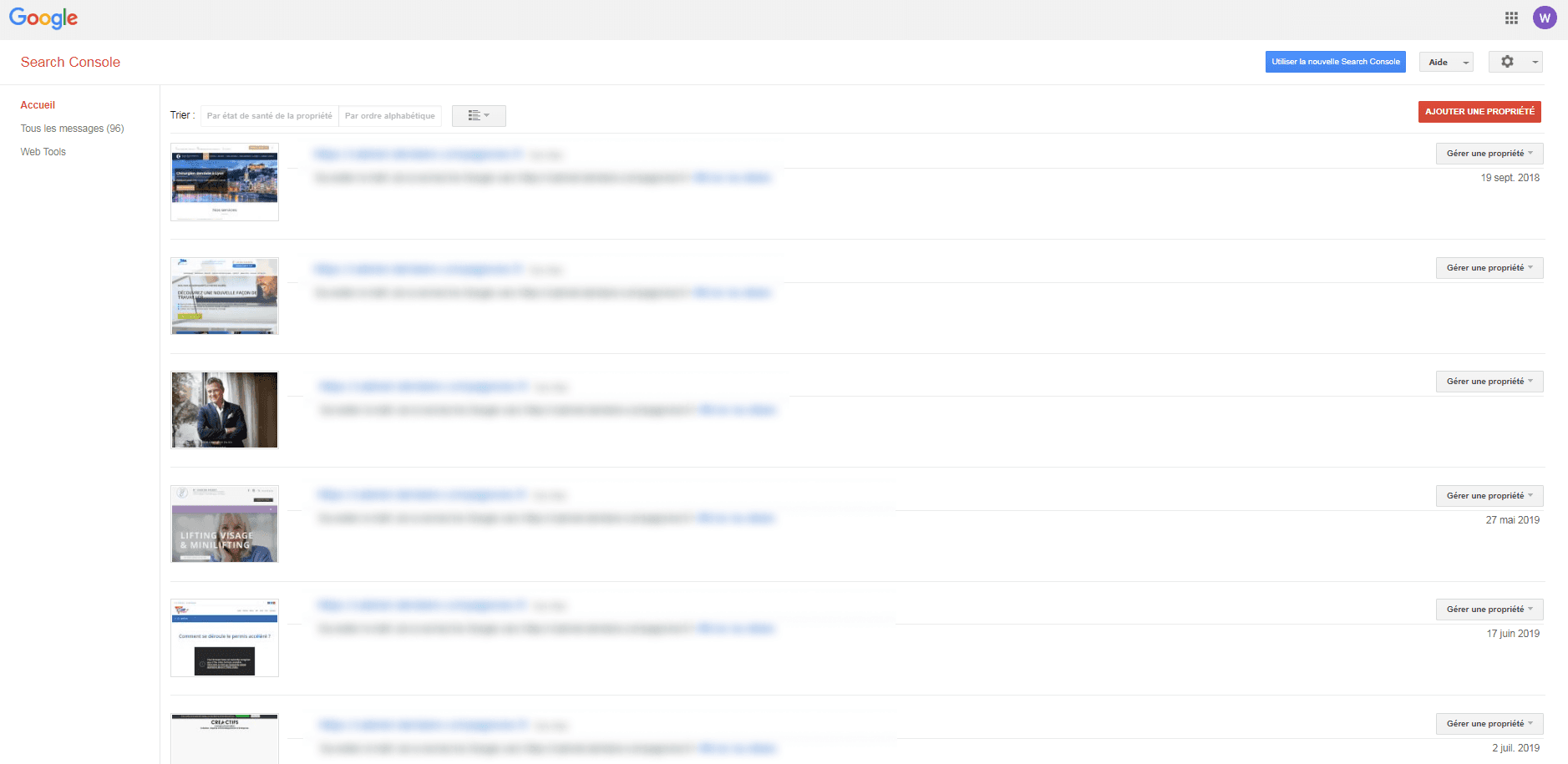
Its rather barbaric name may frighten off beginners, but this tool is not difficult to access. It is aimed at webmasters and website owners who want to optimize their visibility in search results. There are no miracle features to help you see your blog or shop pages move up the rankings quickly, just valuable information that users can use to make various adjustments. Formerly known as Google Webmaster Tools, this service has the advantage of being free.
First of all, it presents data relating to the indexing of the site. For example, if your platform has too many deep pages that have not been visited by the search engine robots, you can be informed of this and take the necessary steps to have them indexed. In addition, larger sites can submit a sitemap to make the work of the crawlers easier. There are two other aspects to Google Search Console. On the one hand, performance data is provided: users can find out the number of impressions, the average CTR and the queries that generate the most visitors. Secondly, the tool recommends a number of actions aimed at improving mobile ergonomics.
Google Analytics

If there were only one natural referencing tool to recommend, it would undoubtedly be this one. Not that it has all the features offered by the other services, but it may be enough for some e-commerce site managers who want to monitor the evolution of their audience and identify the content that is performing best. The fact that it is easy to install and free to use are two of its many advantages, which have largely contributed to its popularity, in addition to the fact that it is developed and regularly updated by Google.
Firstly, Analytics (as web marketers call it) is a fantastic way of understanding where all the visitors who stay on your site for varying lengths of time come from. Do they come from organic search results? From a link you have received on a forum, a partner site or a social network? How much of this is attributed to visitors who have entered your site address directly into their browser? The answers are provided by Google Analytics, which also boasts a rather streamlined interface. In addition to this information, there are tables showing the pages most frequently consulted and the proportion of users who use mobile devices. If you’re looking to boost your business or at the very least register more contacts (newsletter sign-ups, forms, etc.), you’re going to spend hours creating conversion tunnels and analyzing them.
Keyword analysis
The fruits that professionals can reap from their investments are reflected in particular in gains in positioning on keywords linked to their activity.
Google Ads Keyword Planner

It’s easy to stigmatize it and caricature it by explaining that it encourages neophytes to invest in their first Adwords campaigns, but it’s nothing of the sort! If you lack imagination, this service should satisfy you, whether you’re launching a new site or looking to develop your shop’s long tail. Among other things, the tool allows you to identify the expressions most frequently used by Internet users according to their geographical area and the terminals they use to connect. Numerous filters can be applied: competition, natural impression rates, related ideas, etc.
Google Trends

Less well known to new e-merchants, Google Trends is nonetheless an interesting tool for natural search engine optimisation. Are you hesitating between two potentially comparable subjects that you could cover in a blog article? Are you thinking of creating a semantic cocoon around two expressions and would like to know which is the most popular over a given period? Google Trends will give you the information you need! There are two types of information that this tool could be of interest to you. The first is a comparison of the distribution of searches by sub-region, if you have a well-defined catchment area. Next, take a look at the associated queries and their respective trends, all potentially instructive data that could help you increase your organic audience. As with the main Google tools, the advantage of the data provided is that it can be exported with just a few clicks.
Google Suggest
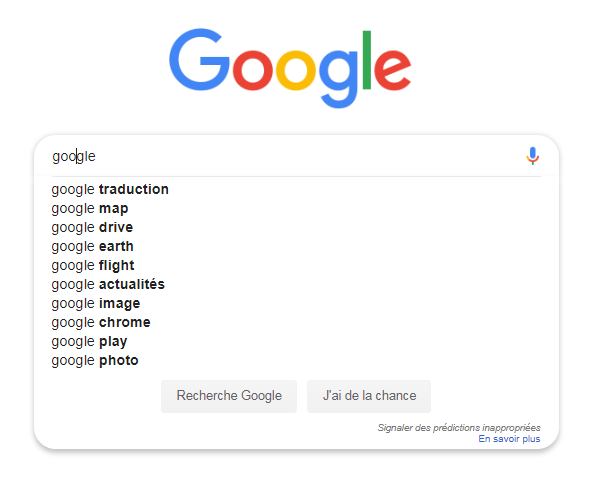
This feature is particularly popular with Google users. Not only does it enable them to complete a query more quickly, but it also directs them to related expressions that they may not have thought of and that may be more relevant to their problem. These are partly determined by the popularity of the keywords used. It should be pointed out that the suggestions made by the engine also depend on the search history and location of the user. Google Suggest is undeniably a valuable keyword acquisition tool insofar as some of the expressions it lists are not necessarily listed by keyword planners.
Les pénalités Google
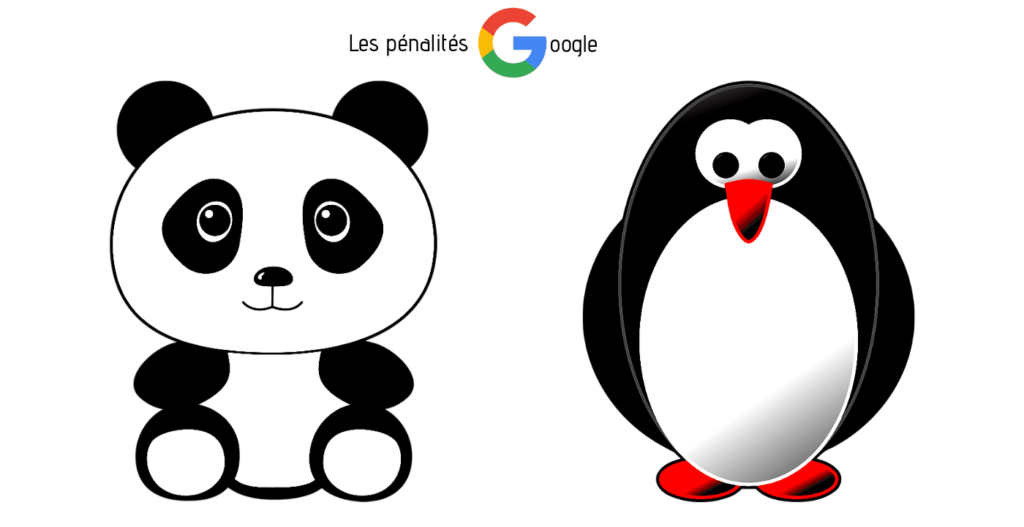
When you are interested in search engine optimization, you should also be aware of the potential penalties that the search engine may impose on your website. On the one hand, there are automatic penalties, where pages are downgraded by the robots themselves, and on the other hand, there are manual penalties imposed by the engine’s staff after they have observed a failure to comply with the rules laid down by Google.
Google Panda
Improving the quality of well-positioned sites
Google Panda is an update to Google’s algorithm dating from winter 2011. It was designed to reduce the spam responsible for the appearance of low-quality content in search results. While its introduction has helped some platforms to gain visibility, others have been heavily impacted by the arrival of Panda.
Targeting content that is little or not original
It is largely content farms that have been penalized by this algorithmic update. More specifically, these were addresses that were very fashionable at the time and specialized in curating and republishing content from other websites. They did not offer original texts, but reproduced the writings of other blogs or news sites. The only solution for webmasters caught at fault? Delete the offending pages and write editorial content, product descriptions and all sorts of unique texts, with hierarchical information relating to their respective themes. E-merchants are among the professionals at risk when they take the easy way out and publish content in the form of supplier notices that have already been used by many other retailers.
Google Penguin
Combating bogus links
The other animal so feared at one time by SEOs is none other than Penguin. This is an algorithm filter designed to combat websites with unnatural link profiles and fake popularity. In Google’s eyes, too many websites have resorted to abusive techniques such as exchanging links or registering in directories to improve their position in the results. Google Penguin is as much about cleaning up the index and penalising platforms that don’t play by the rules as it is about scaring off those tempted to spam the engine for commercial gain.
Is my site being penalised?
Unlike Panda, which penalizes an entire site, Google Penguin impacts certain pages. To find out whether you’ve been targeted by the engine, you can analyze traffic trends over two given periods and possibly notice a significant drop. Notifications are also sent to webmasters on Google Search Console who benefit from abusive links. Removing poor quality backlinks is one way of getting out of a penalty, but there are other possibilities. These include acquiring links with non-optimised anchors.



